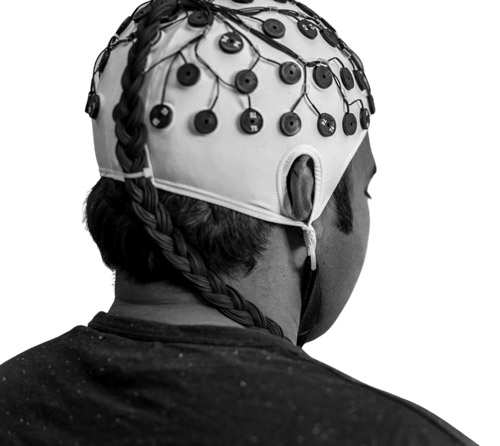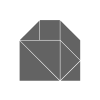Here is the thing about Change and Disruption. Disruption helps us grow. Disruption helps us leave the habit zone, and create new structures. Disruption often is even necessary to keep an organism growing.
Adaption means creating something new = creating new solution for the new environment.
Creation, innovation is often portrayed as deriving from building something completely new. This could not be further from the truth. Across fields, creation is built out of reconnecting what already is there.
That reconnecting doesn’t come from repeating the status quo. Creation it turns out is generated from a disruption the status quo. From leaving the equilibrium and reconnecting the dots.
In this way, crisis can also be a time of opportunity. It can become the catalyst for real innovation.
To get started, let’s make a quick excursion to fields where disruption is the common mode of operandi.
Here are valuable lesson to be learned. No, I don’t propose that we all start to free solo, at least I have no desire to do so. Nor do I propose that getting stranded in a desert with an airplane is a desirable path of action for everyone. But for each of us, the line between the known and the unknown can be drawn at different places, what probably unites is that crossing this line enriches our lives and keeps us growing mentally.
As Saint Exupéry writes, we can opt for the poem, instead of flying mail planes.
It can also be exciting job challenges, as in the case of Jenkins, it can our everyday life’s, or it can be special products that we pursue, travel.
At it’s core, adaption means leaving our habits, not taking our current way of life, our daily routines, our yearly holiday by plane as a given. And it means exploring new spaces, enriching our lives.

Does all of this sound a bit too motivational, too obvious?
I apologise if I got carried away. So let’s digg in a bit.
Let’s take a short journey, along the border between Equilibrium and Disruption, covering the common patterns of Mythology, Systems Science and theories of the creative process, if that’s all right with you?
This journey helps us see why adaption is in fact not a passive process. It helps us see why the flow of disruption and adaption enables something new to emerge, why it enables us to return with new powers.
Adaption to Change & Systems
How do creative processes work? How do new things emerge? What happens when we adapt to our environment?
If we look across the fields of Mythology, Systems Science and theories of the creative process, then we can see interesting parallels of how a few parameters enable new things to emerge.
A.Structure
SYSTEMS SCIENCE
Like in our mythology, the hero of systems science does not operate in a vacuum. He is influenced by outside forces.
Systems science is based on the premise that systems, in fact that our whole world does not consist of independent elements. It consists of interdependent elements that influence each other.
Such systems range from biological systems, to social systems such as societies, nations or businesses, as well as to economies.
Your business is an agent that takes decisions. As a business you operate in a space, let’s call it a market, together with other agents, let’s call them players that equally take independent decisions. These other agents are your customers and your competitors amongst others. Between those agents there are relationships.
The most important feature of those systems is that they are nonlinear and dynamic. This means because of the interdependence of their elements they react to influences. Everything is connected to everything else. In our economy, different businesses are connected, our societies are interconnected. Our behaviour is connected with the climate and the rest of our planet. The list is endless.
This is important, because oftentimes, when system elements, like businesses or policy decisions are discussed these elements are treated as isolated events. This leads to significant misperceptions. Take classic economic theory for example, that used to view the economy as an equilibrium. Viewing the economy as an equilibrium misses the important point, that outside influences have an impact on players in the economy, thus stirring up the equilibrium. The example can be extended to the influence of technology on our behaviour as consumers as workers, as family members and friends. It can be extended on government policies, environmental initiatives, social initiatives or simply your everyday work interactions with your coworkers or business partners.
The other important thing is that these systems are able to do is self-organise. This is because they adapt to new inputs, leading to an emergence of new structures and capabilities of the system. How this works is what we will explore below.
CREATIVITY
On to Creativity Theories and Neuroscience. This is about how we come up with the ideas that feed these businesses.
Dynamic system
These fields similarly deal with another type of dynamic, connected, and self-organising system. They deal with our brains, and in particular the connected cortices within our brain.
Now the amazing thing is that our brain is adaptable to its environment and to the demands of our lives. It is not a hardwired structure. Research in Neuroplasticity has found out that our brain is not static. It evolves and it organises itself depending on the stimuli we get. In this way it is a dynamic system as well. Neuroplasticity is a research field that explores how our brain keeps adapting to external influences.
The more often something is repeated, the stronger the links between the neurons, and the more easily they can get activated later on. Everything we learn is embedded in these connections.
B.Process
If we look at our fields of Mythology, Systems Science and theories of the creative process, then we see that they all follow the same pattern of how things are created. We can see interesting parallels of how a few parameters enable new things to emerge.



